Long White Gypsy uses affiliate links and is a member of the Amazon Services LLC Associates Program. If you make a purchase using one of these links, I may receive a small commission at no extra cost to you. See my Privacy Policy for more information.
Just a hop, skip, and a jump from my home in Christchurch, the Kura Tawhiti Access Track is a picturesque trail that will blow your mind with its majestic limestone rock formations and breathtaking views, especially when dusted with a touch of snow-capped mountains at the end of winter.
It’s perfect for both beginner hikers and tourists wanting to experience the thrill of hiking in New Zealand’s breathtaking landscapes.
As a seasoned solo hiker and proud kiwi tramper who now calls Christchurch home, I can give you insights from my personal experience visiting this amazing track which is just a short 1.5 (ish) hour journey from my doorstep.
So, grab your boots, and let’s get started!
Track Info

Dogs not permitted

Mountain bikes not permitted
Track Notes for the Kura Tawhiti Access Track
| LOCATION | Castle Hill New Zealand |
| TRACK GRADE | Easy |
| TOILETS | 1x long drop at carpark |
| WATER | None |
| PHONE RECEPTION | Patchy |
| TRANSPORT | Private car, shuttle bus or hitchhiking |
| HAZARDS | Track is very exposed with little shelter, no water along track, snow falls to ground level in winter and can be slippery. |
| SPECIAL GEAR | Warm and waterproof clothing, sunscreen and plenty of sun protection, at least 1L of water. |
The Route.
The route takes you straight off the bustle of busy State Highway 73 into the heart of the Kura Tawhiti Conservation Area on the lower slopes of Castle Hill.
Immediately off to the left at the start of the track is a covered seating area and three pouwhenua (land post) poles, which provide guardianship and stewardship over the conservation area.
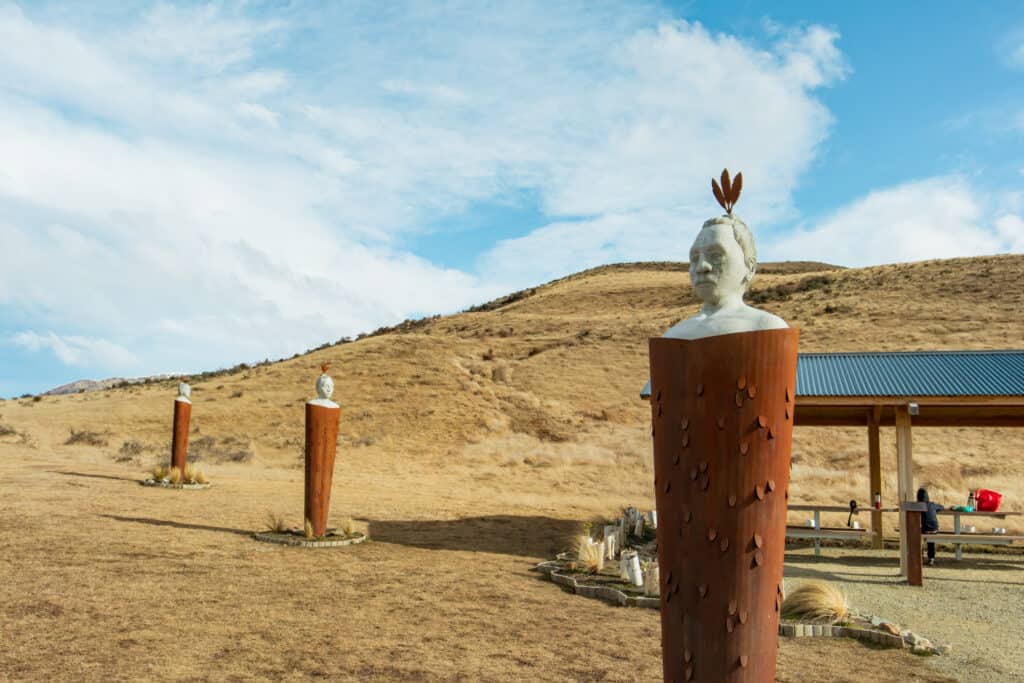
From the shelter, it’s a straight track to the bottom of the first rise, which intersects with a short loop track taking you through a selection of the limestone tors that make this area famous.
At the bottom of the straight track you can veer either left or right onto the loop.
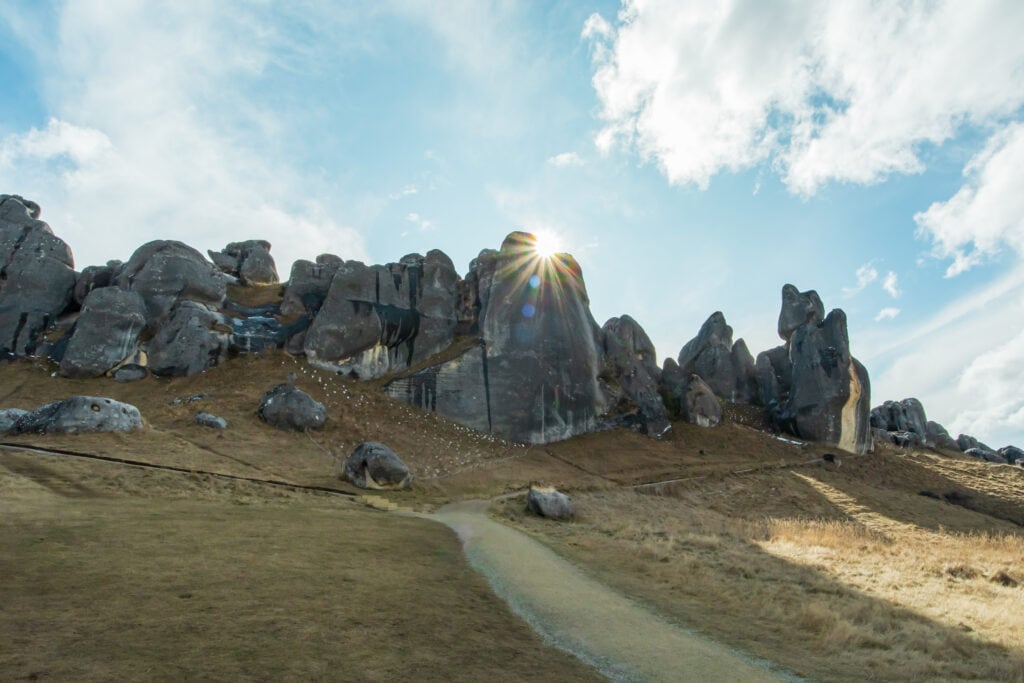
The left hand loop first makes a short but steep climb up a long set of stairs to the climbing and bouldering area at the top of the track.
I took the right hand loop, which makes a gradual ascent via a well-graded path underneath some of the tallest boulders before heading up a short set of stairs to a lookout point at the top of the track.
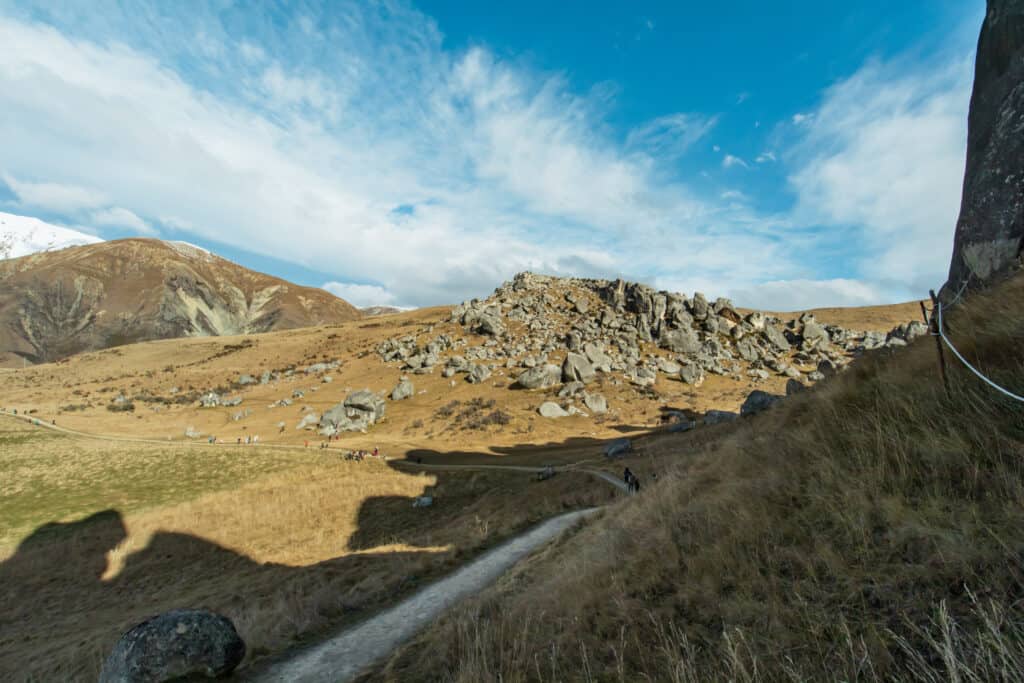
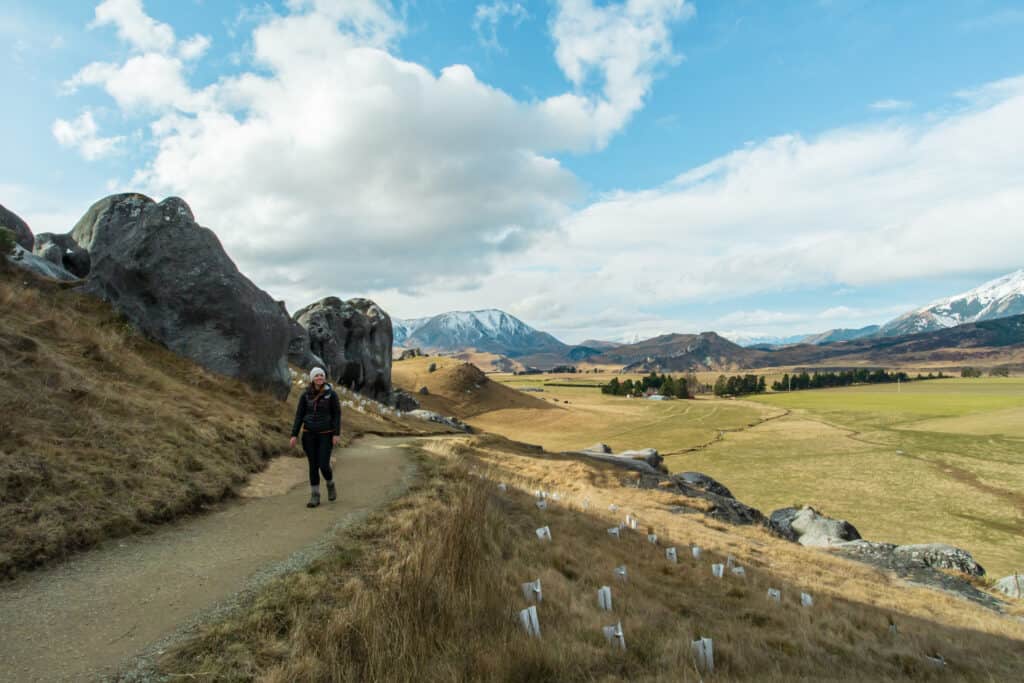
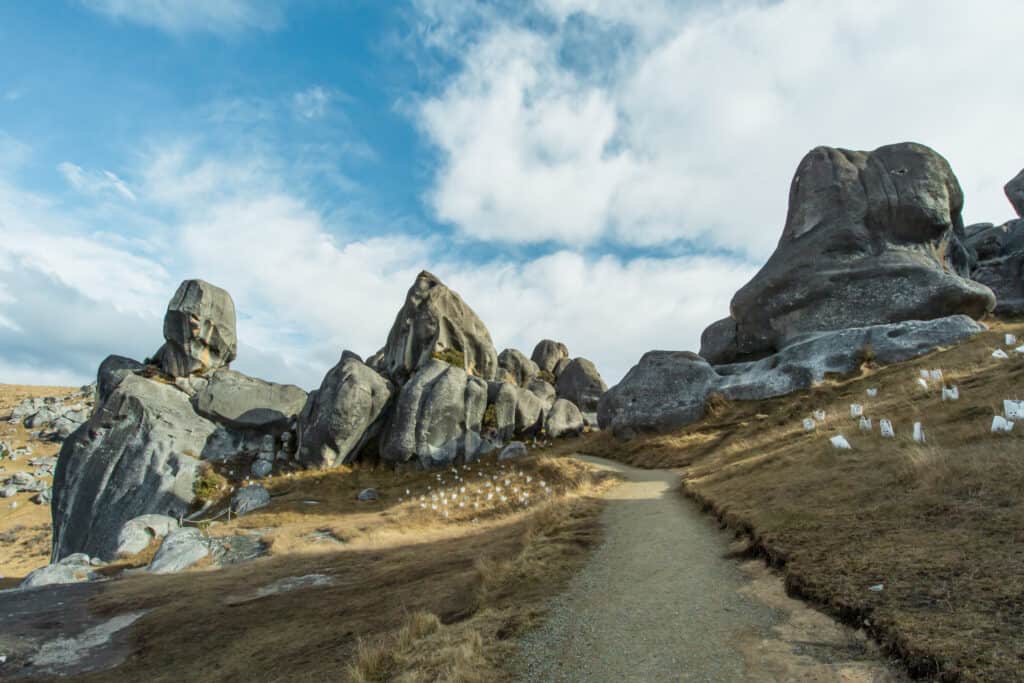
Once you reach the boulder field at the top, you can go exploring. There’s plenty of amazing boulders and formations to wander among, although you should be careful not to trample fragile vegetation.
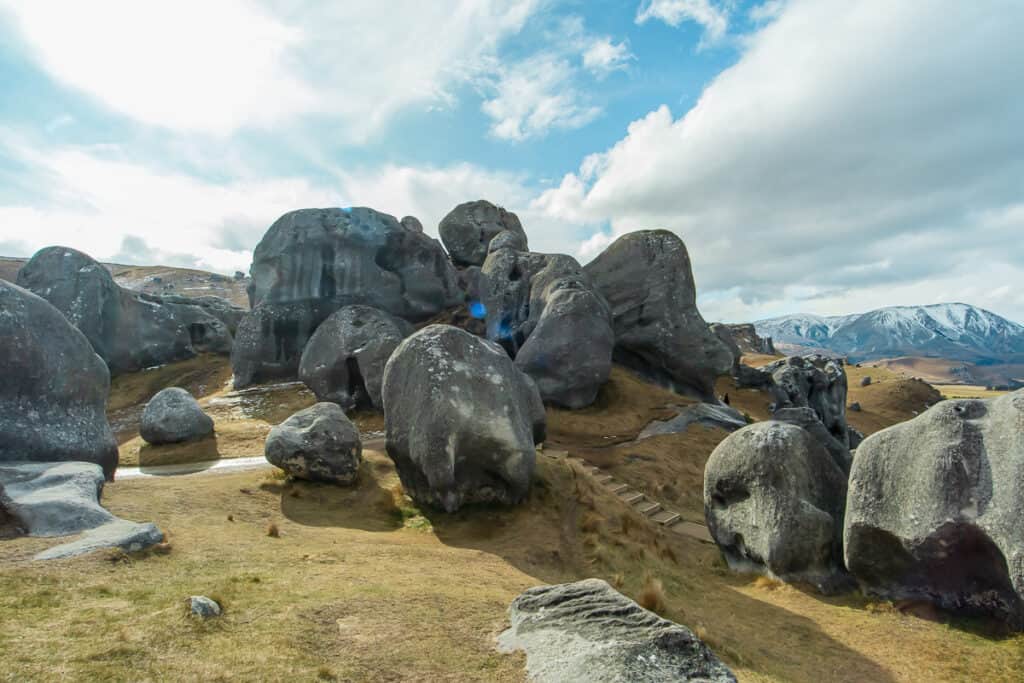
There is a large tarn here and if you’re here on a weekend you’ll likely see plenty of groups of climbers and boulderers enjoying the range of problems on offer.
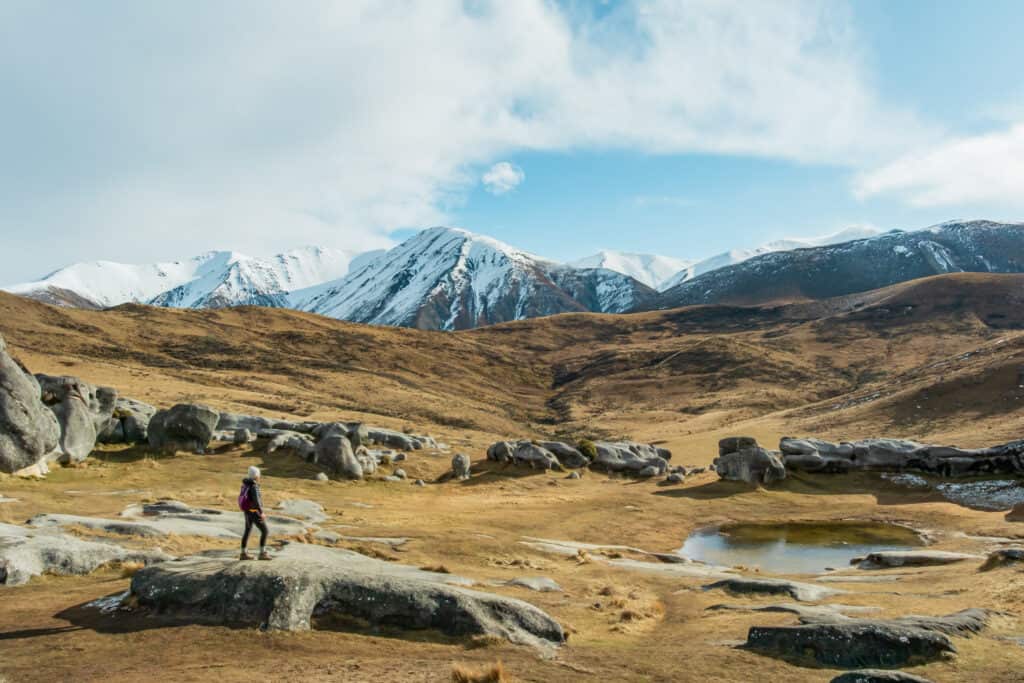
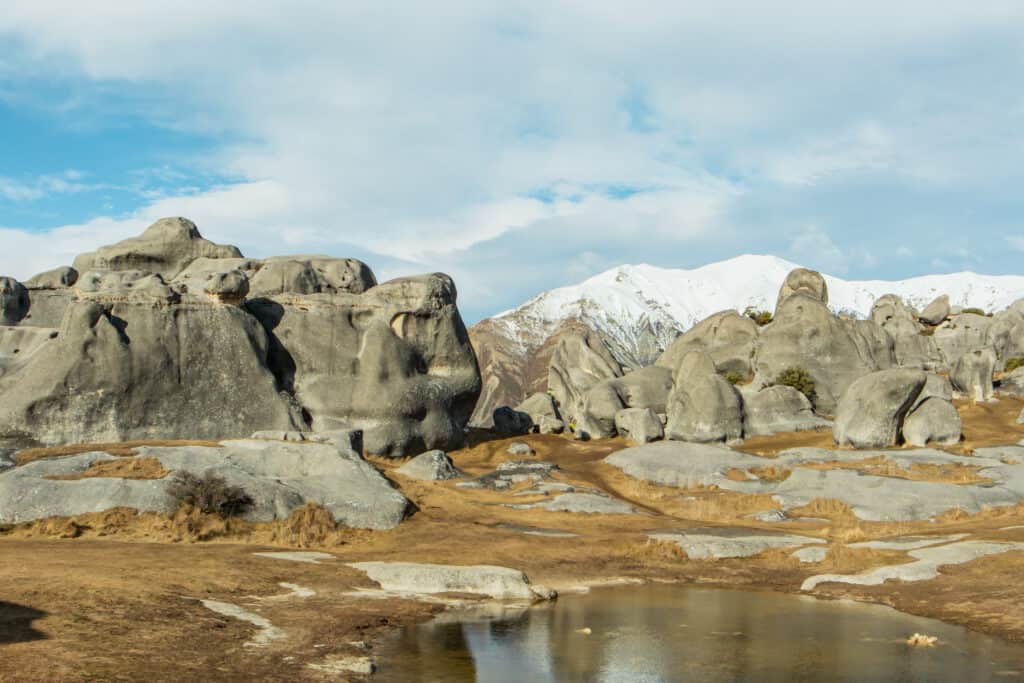
You can spend a good hour or more wandering around, making the most of the views out over the Castle Hill basin to the Craigieburn and Torlesse Ranges.
There’s also plenty of vantage points from which you can admire some of the limestone boulder fields at places like Flock Hill and Prebble Hill in the distance (on the other side of State Highway 73).
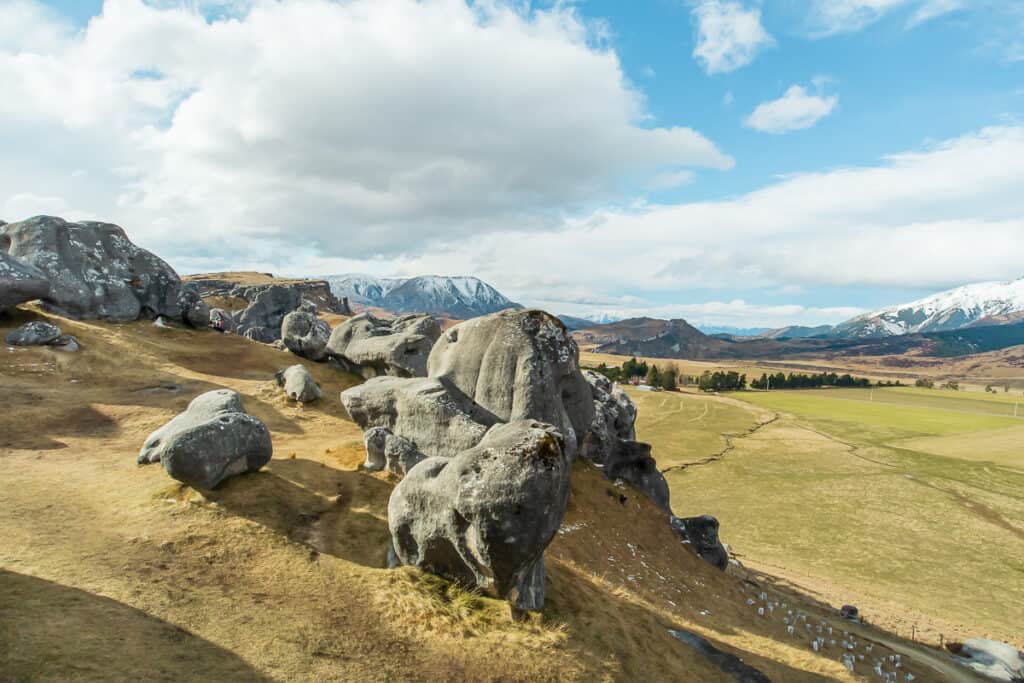
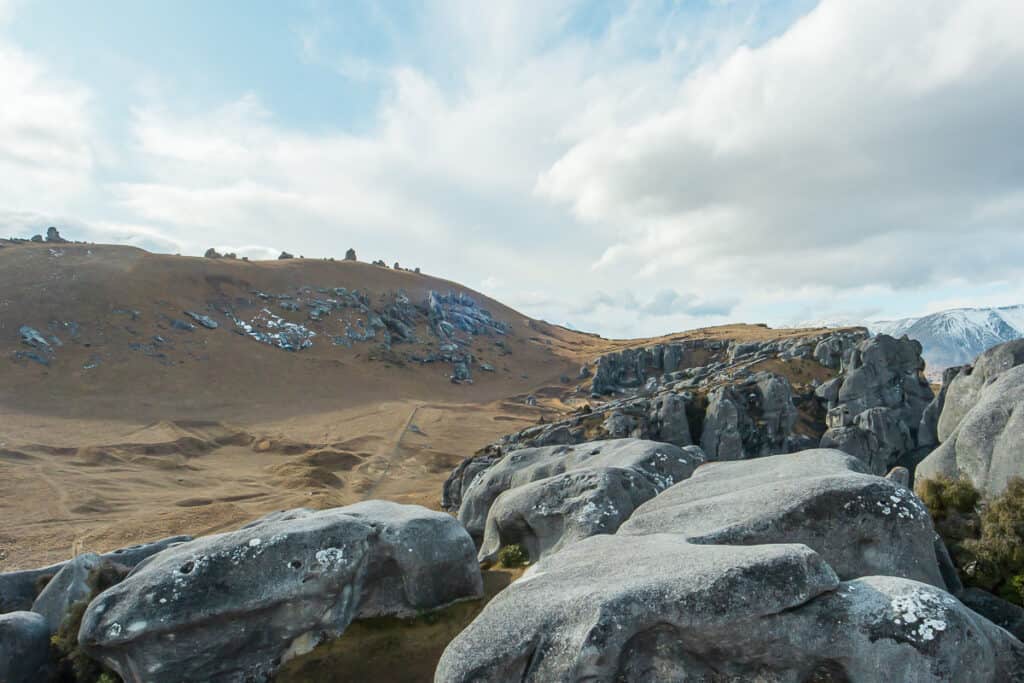
Once you’ve had your fill of rock-hopping at the top, it’s time to make your way back to the car. It’s an easy downhill track through some of the largest of the boulders on the way down.
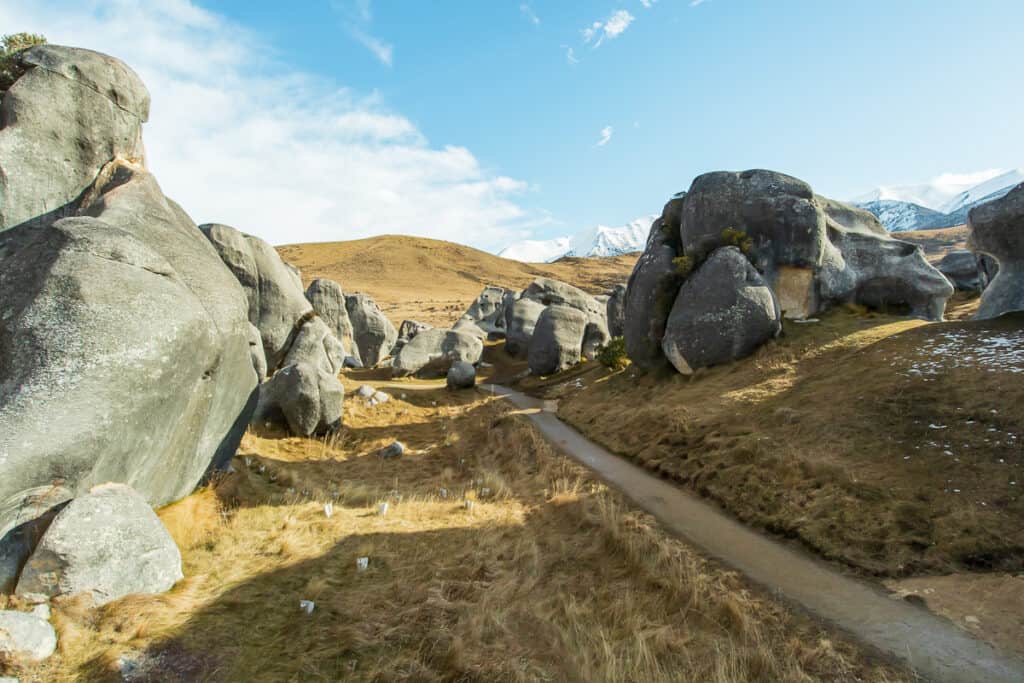
Shortly you’ll come to the longest of the sets of stairs, and you’ll soon rejoin the main track back to the carpark. There was still some snow on the track when I visited in August, and on this side of the boulders (which doesn’t receive the morning sun) it was still hanging around a bit!
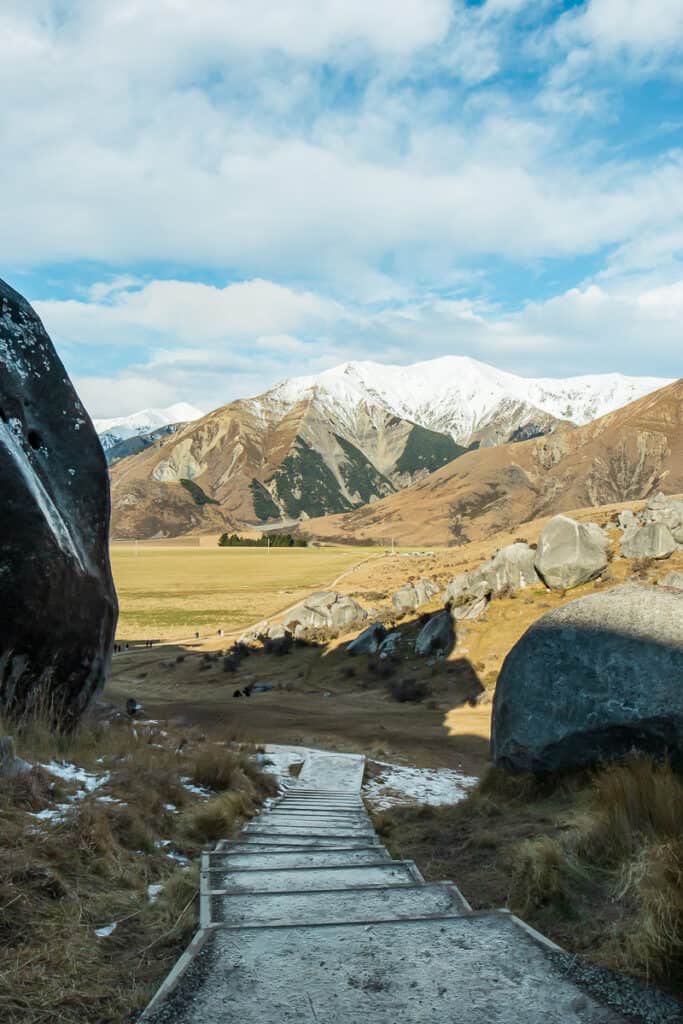
Off to the right is another climbing area, and if you’ve still got more energy (and time) you can head up the hill to explore a bit more.

Things to Know.
Exposed & Lack of Shelter

The wide open Castle Hill Basin provides little opportunity to shelter from the elements. The area was once covered in dense forest, but a large fire 600 years ago decimated the forest with the sole remaining survivor a lonely single totara tree.
Although the limestone boulders and tors provide a little bit of shade, the changing angle of the sun will affect this, especially at midday in summer where the sun is directly overhead. In winter, there is more shade on the track.
Make sure to take plenty of warm & waterproof clothing in winter, and long layers, sunscreen, sunhat and sunglasses in summer just in case.
Winter Weather
In winter, snow falls to ground level in the Castle Hill basin, making the track a great option to explore a winter wonderland as long as you are prepared.
You may find microspikes or rubber-soled boots make the going easier if you’re planning to walk the track in winter and there is thick snow cover.
As the snow melts, the track can become very muddy and you may have to navigate some big puddles.
Falcons Nesting
Over the summer months (approximately December to March) , the New Zealand karearea (falcon) nests in and around the Kura Tawhiti Conservation Area.
During nesting season, the karearea may nest on or near the Access Track. They are very territorial at this time of year.
Karearea may swoop if you get too close, so make sure to check for alerts on the DOC website, stay on the marked track and keep well clear of the nesting sites if a warning is in place.
Natural History & Geology
On this track you’ll wander among magnificent limestone formations shaped by wind and water over millions of years. The track and its environs were once at the bottom of an ancient seabed, which has since been thrusted upwards by the forces of uplift and faulting.
Exposed to the elements, the rock has now begun to wear away, leaving behind the smooth and interesting shapes of the limestone tors that litter both the Kura Tawhiti Conservation area and the larger Castle Hill Basin.

CASTLE HILL VISITOR GUIDE
Find out more about Castle Hill’s natural history in my comprehensive Visitor’s Guide.
Filming Location
You may feel like you’ve stepped into a scene from a fantasy movie, and you wouldn’t be far wrong… the slopes of nearby Flock Hill (visible from the track) were used as a filming location for Narnia: The Lion, the Witch and the Wardrobe!
Track Grade & Fitness.
The Kura Tawhiti Access Track is graded an Easy walking track by the Department of Conservation. Its entire length can be walked in around an hour at a leisurely pace, making it great for people of most ages and fitness levels.
Because of the presence of stairs on the track, it is not suitable for wheelchairs.
It is a well formed gravel path all the way around which gently ascends up to the lower slopes of Castle Hill. In some places there are short sections of steps.
During winter, there can be snow and ice on the track. Depending on how much, you may still be able to walk the track comfortably, although you might find microspikes or rubber-soled boots make the going a bit easier.
How to Get There.
Kura Tawhiti Access Track Map
The Kura Tawhiti Conservation Area and Castle Hill are accessed via State Highway 73 west of Christchurch.
The Conservation Area carpark is located approximately 90 kilometres / 56 miles or a 1 hour 10 minute drive from Christchurch Airport.
The best (and most reliable) way to get here is by private car, however you can also reach the location via the East-West Coaches shuttle bus.
If you don’t have your own private car, you can rent one easily from Christchurch Airport:

CASTLE HILL VISITOR GUIDE
Find out more about the best ways to get to the Castle Hill Basin in my comprehensive Visitor’s Guide to Castle Hill.
Facilities.
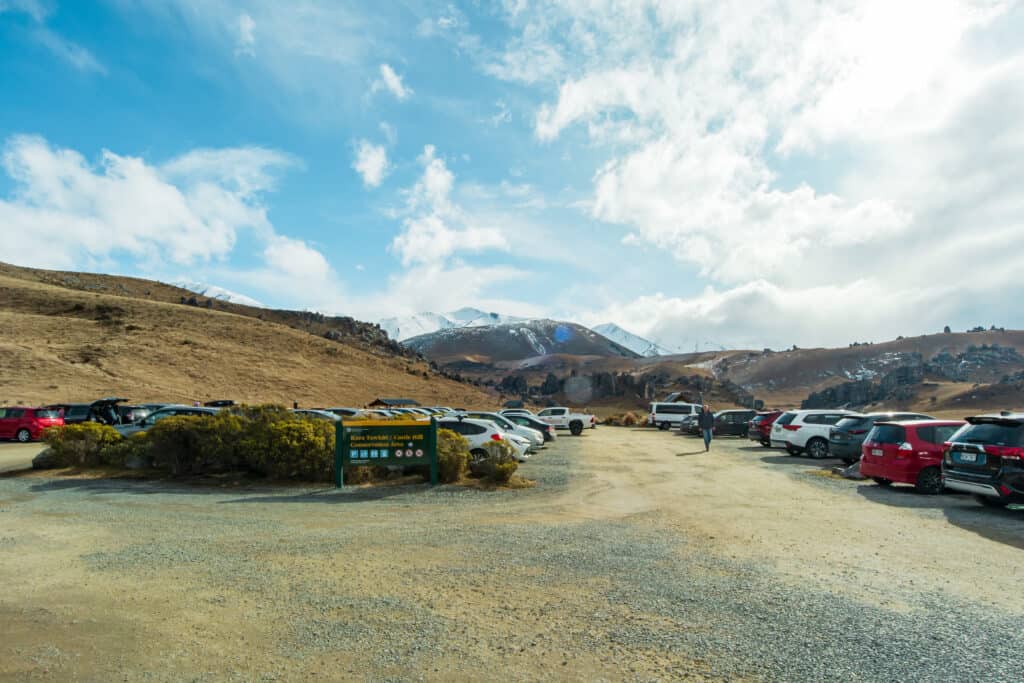
There is a large carpark at the trailhead which is often busy, especially during the weekends. I’ve often seen the odd car parked along the side of the highway, but this is not recommended.
Visit early in the day to make the most of the parking.
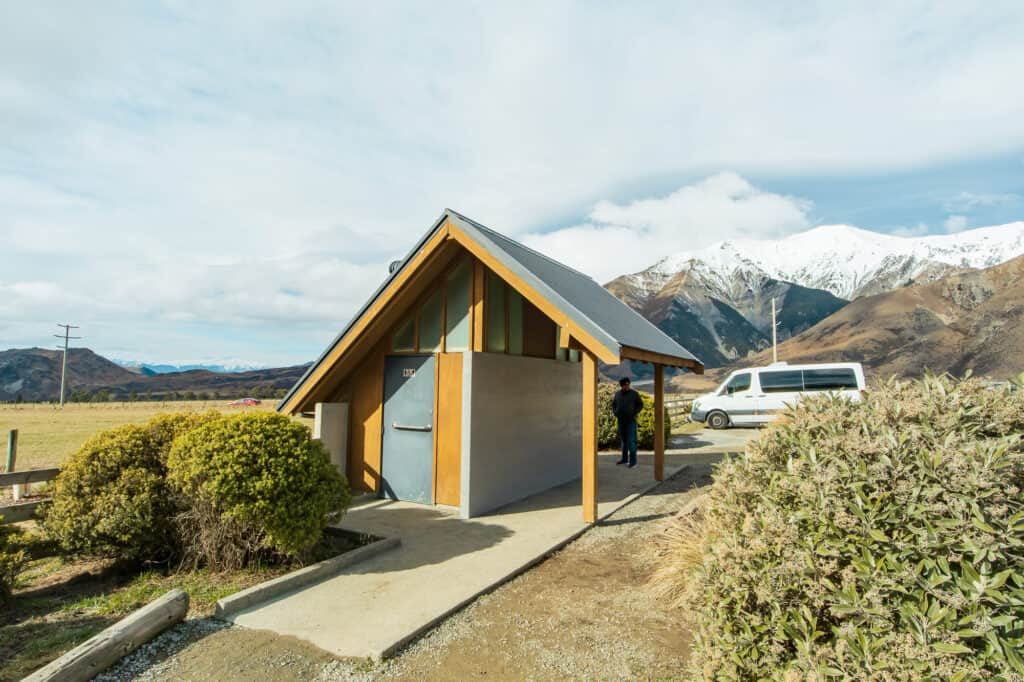
There is a set of covered benches at the start of the track, as well as a basic long drop toilet. You will need to bring your own toilet paper just in case.
Food & Water.
Because the track takes less than an hour to complete in its entirety, you’ll only need a few snacks for your trip.
However, this would be a wonderful place to bring a picnic lunch especially during the autumn months when the surrounding mountains will still have a bit of snow on their tops. Just make sure to bring some warm clothes with you, as it can get quite chilly!
There are no water sources on the track, so make sure to bring enough for your trip (depending on how long you are spending here).
For just a short walk around the boulders, you’ll only need around 1 litre per person. If you’re planning to stop for a picnic lunch or longer, you should bring more.
Seasonal Variations.
In the embrace of summer, Kura Tawhiti is a dry and exciting playground with wonderful views of the surrounding Southern Alps, making it a magnet for both tourists and local climbers and boulders.
In winter, the landscape is draped in a blanket of snow, and the basin transforms into an enchanting winter wonderland. It’s a sight to behold, and an absolute treat for those who relish the crisp air and the muffled stillness.

Remember, Castle Hill is located in an alpine environment so even on clear days the weather has a mind of its own – it can shift from sunny to cold, windy, or wet faster than you might think, so dressing in warm and waterproof layers is the way to go.
When spring’s thaw sets in, the track can turn into a bit of a mud fest. Boots that you don’t mind getting dirty are your best bet for enjoying the track.
No matter when you visit, though, the beauty of this place is a constant. Always remember to respect this wild playground and leave it as pristine as you found it for others to enjoy.
Final Thoughts: Kura Tawhiti Access Track.
Whether you seek solitude, a challenge on the boulders, or a simple picnic with a view that leaves you speechless, these ancient stones stand guard, ready to embrace your adventurous spirit.
If you’re eager for extra details and insider tips to enhance your visit, check out my Guide to Castle Hill. It’s packed with all you need to know, from hidden gems to practical advice for visiting, staying and playing in this adventure hotspot!
